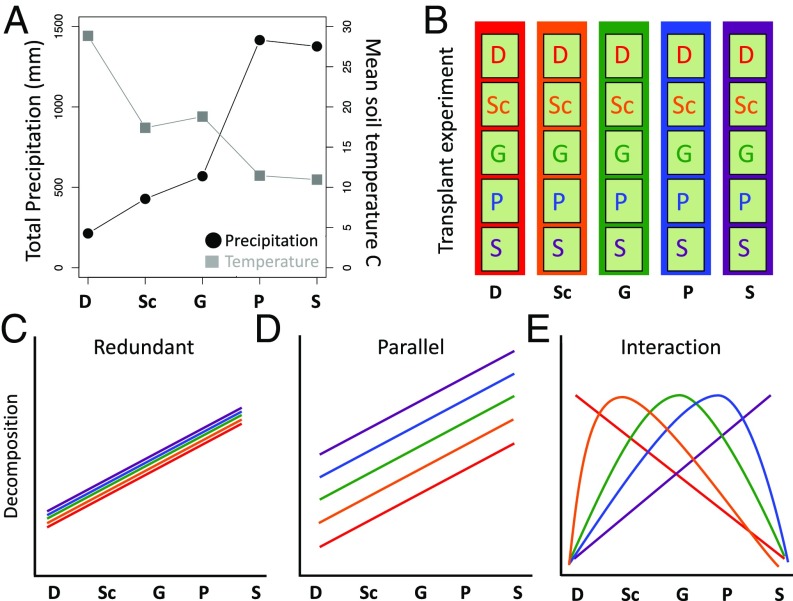Fig. 1.
(A) Total precipitation (in millimeters) and mean annual soil temperature (in degrees Celsius) at the five sites along the elevation gradient. Sites are represented in increasing precipitation order in the same color scheme: desert (D) = red, scrubland (Sc) = orange, grassland (G) = green, pine–oak (P) = blue, and subalpine (S) = purple. (B) Schematic of microbial transplant experiment. Microbial communities from all sites were placed in a common garden experiment in all sites using a common substrate (irradiated grassland litter represented with light green box; n = 5 inocula × 5 sites × 4 plots × 3 time points = 300 litterbags). Three possibilities for decomposition responses are: (C) redundant, in which all microbes function similarly in every site and are only affected by abiotic conditions; (D) parallel, in which microbes differentially affect decomposition, but respond to climate in a proportional manner; and (E) and interaction, in which decomposition is a result of an interaction between microbial communities and their environment. While any interaction is possible, we illustrate an example in which a community decomposes most in its home site (home-field advantage).

